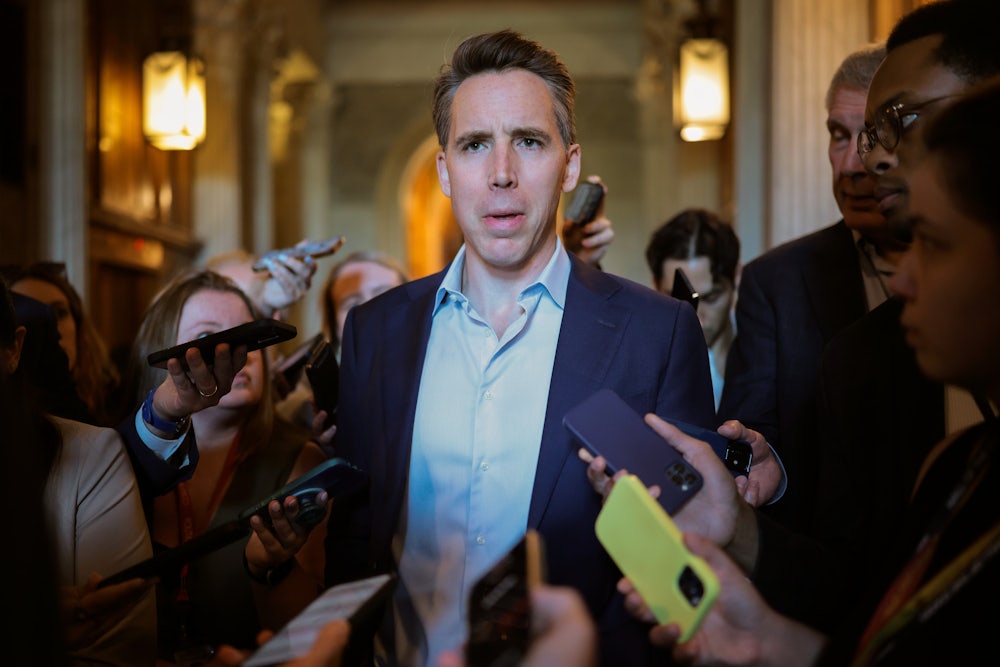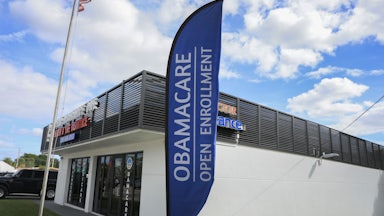Earlier this year, as Republicans stuffed President Trump’s One Big Beautiful Bill with handouts to the rich and cuts to programs for the needy, one of the main sticking points among several key GOP senators was the proposed reductions to Medicaid. Their worry was not for the estimated 12 million people who would lose access to the program, but for the already struggling rural hospitals that might go under as a result of the cuts. Missouri Senator Josh Hawley wrote in The New York Times that “many of our rural hospitals and health providers depend on the funding from these programs to keep their doors open.… If Congress cuts funding for Medicaid benefits, Missouri workers and their children will lose their health care. And hospitals will close. It’s that simple.”
And yet, Hawley voted for the budget bill. So did Alaska Senator Lisa Murkowski, who had expressed similar reservations. What swayed them? Republican leaders added a $50 billion rural health fund to the bill. “This will mean hundreds of millions of dollars for Alaska hospitals, community health centers, and other providers,” Murkowski said at the time. (Neither she nor Hawley responded to requests for comment.)
While $50 billion sounds like a lot of money, it’s far less than the estimated losses—$137 billion—facing rural hospitals due to the Medicaid cuts. And it gets worse: The fund isn’t the infusion of cash for rural hospitals Senate leaders claimed it would be. It will be spread far too thinly to save hospitals on the brink, and in fact it looks to be primarily a slush fund for the Make America Healthy Again agenda.
Dispersing the $50 billion fund, now known as the Rural Health Transformation Program, fell to the Centers for Medicare & Medicaid Services. In September, CMS announced it would distribute half the money to all states with an approved application regardless of the size of their rural population. All 50 states have applied; if all are approved, each one would only get $100 million per year over five years.
As for the other half of the fund, it will be distributed according to a score determined by the states’ rural populations and grant applications. The applications will be evaluated along strategic goals that include tech and health care innovation, workforce development, sustainable access, and “Make rural America healthy again,” which it describes thus: “Support rural health innovations and new access points to promote preventative health and address root causes of diseases.”
Not every state has made its applications public, but many have emphasized the use of technology like telehealth and initiatives like increasing access to healthy foods. Yet rural health care is facing basic problems that simply require more funding, not innovation. “I do think there is some hesitation in the way it’s being rolled out, because there is less of a direct focus on sustaining the provider community and more on bringing innovation,” said Carrie Cochlan-McClain, chief policy officer for the National Rural Hospital Association.
For example, almost half of rural hospitals are in the red in part because Medicare and Medicaid pay doctors and hospitals less than private insurers do. Bigger hospitals tend to make up for that because they have more patients with private insurance, but because rural hospitals serve patients who are more likely to rely on Medicare and Medicaid, they struggle to cover costs. Yet the budget law caps at 15 percent the amount of the Rural Health Transformation funds that can be used to pay providers, which means states can’t use the money to help plug that gap.
“The fundamental problem is, can hospitals do hospital stuff?” said Michael Chameides, communications and policy director at the Rural Democracy Initiative. “It’s great if our hospital provides telehealth services, but if it can’t provide fundamental hospital services, that’s still a challenge.”
The grant will be dispersed over five years, and CMS will monitor how states implement their proposals, which means that many states may be reluctant to try something that could be truly transformative but would take longer to show results. Cochlan-McClain said that she would like to see more states provide funds for hospitals to move away from a fee-for-service model, which is how they’re reimbursed for care now, to one that provides a global, fixed fund for taking care of a patient population.
Describing the latter model, she said, “They are paid more based on the outcomes of that patient’s health and care, and less on the number of times they are seen in the clinic.” Because rural health clinics have a lower volume of services, this kind of payment system would allow them to focus on patients’ needs, from preventative care to mental health, and would pay them for how well the patient does over time, she said. “It’s a smarter way to take care of patients, and because it is one of the strategic goals in the applications, we are hopeful that states wrote to it,” she said.
Pennsylvania has been testing such a model. But five years would be a short time to implement such a dramatic change to paying for health care, she said. Rural areas already have a shortage of health care professionals. If doctors in rural areas can’t get paid as well as they can in larger cities, no amount of workforce training, which the fund supports, will keep them there.
Advocates are also worried about the arbitrary nature of how the awards may be determined and monitored. Mehmet Oz, the CMS director, seems to have a lot of leeway. Chameides pointed to Trump’s recent decision to give billions to Argentina because of election results there as the kind of arbitrary decision-making this administration can often make. “They have sort of publicly said that they are going to use the powers that they have to reward or punish people based on favoritism,” he said. “Will that same criterion be used for health care? I don’t know, but it certainly gives me concern.”
In the past, Oz has said the program will help “right-size” rural health care. That is jargon that could mean more hospital consolidation across the country or “partnering” small hospitals with bigger hospitals. In the past, that kind of consolidation has led to more rural facilities closures and higher prices. Oz has also said working-age Americans should stop eating cake and get off Medicaid and go to work, ignoring the fact that most Medicaid recipients who are able to work do so.
Those kinds of statements, along with the vague outlines provided by CMS, mean that rather than shoring up the health care needs of rural communities, the Rural Health Transformation fund may become just another tool for the mercurial Trump administration to mete out reward and punishment. We’ll find out soon, as the administration will distribute the funds by the end of the year.
Nonetheless, the future for rural hospitals remains grim. Nearly half of them are operating at a loss, and more than 400 are vulnerable to closure. With this administration committed to reducing Americans’ access to health care, and the U.S. system becoming ludicrously expensive and unequal, we can expect rural hospitals to cut services and shutter at an increasing clip. Getting us out of this mess will require innovation, sure, but a relatively small amount of money overseen by MAGA apparatchiks isn’t going to do the trick.






